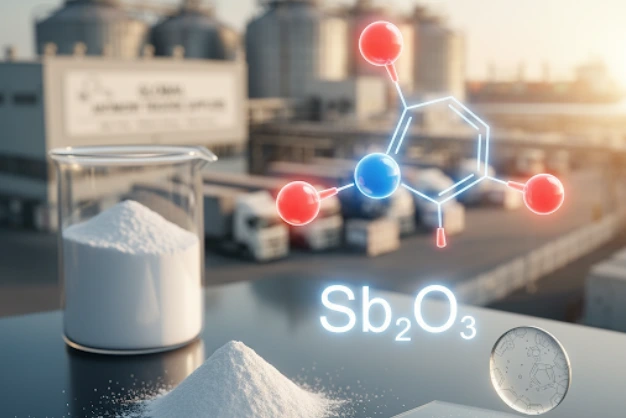TABLE OF CONTENTS
TABLE OF CONTENTS
Introduction
Importance of Chemical Procurement in Manufacturing
Chemical procurement is a crucial aspect of the manufacturing industry, ensuring that the necessary materials are available to maintain production and meet quality standards. The right chemicals are essential for various processes, from cleaning and maintenance to production and finishing. Effective procurement practices not only guarantee the supply of high-quality chemicals but also help in optimizing costs, ensuring safety, and complying with regulatory requirements.
Overview of the Chemical Procurement Process
Chemical procurement involves several steps, including planning, sourcing, purchasing, and managing chemicals. Each stage requires careful consideration and coordination to ensure that the right chemicals are acquired at the best possible prices, delivered on time, and stored safely. This guide aims to provide a comprehensive overview of the entire process, offering insights and practical tips for purchase managers and other professionals involved in chemical procurement.
Objectives of the Guide
The primary goal of this guide is to help you understand the complexities of chemical procurement and provide you with the knowledge and tools needed to manage it effectively. By the end of this guide, you should be able to:
1. Define the scope and importance of chemical procurement.
2. Identify the key stakeholders involved in the procurement process.
3. Understand the various phases of procurement.
4. Recognize common challenges and develop strategies to overcome them.
Understanding Chemical Procurement
Definition and Scope of Chemical Procurement
Chemical procurement refers to the process of acquiring chemicals needed for various industrial and manufacturing processes. This process encompasses everything from identifying the need for specific chemicals to negotiating contracts with suppliers, placing orders, and ensuring safe delivery and storage. The scope of chemical procurement extends beyond mere purchasing; it also involves quality assurance, compliance with safety and environmental regulations, and cost management.
Key Stakeholders in the Procurement Process
Several stakeholders play critical roles in the chemical procurement process, including:
1. Purchase Managers: Responsible for overseeing the procurement process, negotiating with suppliers, and ensuring that chemicals meet quality and safety standards.
2. Suppliers: Companies or individuals that provide the chemicals. They must ensure timely delivery and compliance with specified quality standards.
3. Quality Assurance Teams: Ensure that the chemicals procured meet the necessary quality and safety standards.
4. Regulatory Bodies: Ensure compliance with safety, environmental, and industry-specific regulations.
5. End Users: Employees who use the chemicals in various manufacturing processes. Their feedback is crucial for continuous improvement.
Phases of Chemical Procurement: Planning, Sourcing, Purchasing, and Managing
1. Planning: This phase involves identifying the types and quantities of chemicals required, forecasting future needs, and developing a procurement strategy. Effective planning helps in avoiding shortages and overstocking, thereby optimizing inventory levels.
2. Sourcing: In this phase, potential suppliers are identified and evaluated based on their ability to meet quality, cost, and delivery requirements. Establishing strong relationships with reliable suppliers is crucial for ensuring a consistent supply of high-quality chemicals.
3. Purchasing: This involves negotiating contracts, placing orders, and ensuring that all terms and conditions are clearly defined. Effective purchasing practices help in securing the best prices and terms, thereby reducing costs and ensuring timely delivery.
4. Managing: This phase includes receiving and inspecting the chemicals, ensuring proper storage, and maintaining accurate records. It also involves continuous monitoring of supplier performance and compliance with safety and environmental regulations.
Challenges in Chemical Procurement
Common Obstacles Faced by Purchase Managers
Chemical procurement is fraught with challenges, some of the most common being:
1. Supplier Reliability: Ensuring that suppliers consistently deliver high-quality chemicals on time can be difficult. Supplier performance can fluctuate due to various factors such as economic conditions, production issues, and logistical challenges.
2. Cost Management: Fluctuating prices of raw materials and chemicals can impact budgets. Purchase managers need to balance cost control with the need to maintain quality and compliance.
3. Regulatory Compliance: The chemical industry is highly regulated, with stringent safety and environmental standards. Keeping up with changing regulations and ensuring compliance can be complex and time-consuming.
4. Supply Chain Disruptions: Global supply chains can be disrupted by a variety of factors, including natural disasters, political instability, and transportation issues. These disruptions can lead to delays and increased costs.
Impact of Global Supply Chain Disruptions
Global supply chain disruptions can have a significant impact on chemical procurement. For instance:
1. Delayed Deliveries: Disruptions can lead to delays in the delivery of chemicals, which can halt production processes and result in financial losses.
2. Increased Costs: Supply chain disruptions often lead to increased transportation and storage costs. In some cases, companies may need to source chemicals from alternative suppliers at higher prices.
3. Quality Issues: In times of disruption, companies might be forced to procure chemicals from unfamiliar suppliers, which can lead to quality issues and compliance risks.
4. Inventory Challenges: Disruptions can lead to either excess inventory or stockouts, both of which have financial implications. Managing inventory levels becomes a critical task during such times.
Mitigation Strategies for Common Challenges
1. Supplier Diversification: Having a diverse supplier base reduces the risk of dependency on a single supplier and helps in mitigating supply chain disruptions.
2. Long-Term Contracts: Negotiating long-term contracts with suppliers can help in securing stable prices and ensuring consistent supply.
3. Regular Audits: Conducting regular audits of suppliers helps in ensuring compliance with quality and safety standards. It also helps in identifying potential risks early.
4. Inventory Management: Implementing effective inventory management practices, such as just-in-time (JIT) inventory, can help in maintaining optimal inventory levels and reducing costs.
5. Technology Integration: Utilizing technology for procurement processes can improve efficiency and accuracy. Tools such as Enterprise Resource Planning (ERP) systems can help in managing inventory, forecasting demand, and tracking supplier performance.
5. Training and Education: Providing regular training and education to procurement and quality assurance teams ensures that they are up-to-date with the latest industry standards and best practices.
Conclusion
Chemical procurement is a complex but essential aspect of the manufacturing industry. By understanding the various phases of the procurement process, identifying key stakeholders, and recognizing common challenges, purchase managers can develop effective strategies to manage chemical procurement efficiently. This guide aims to provide a comprehensive overview of the process, offering practical tips and insights to help you navigate the complexities of chemical procurement successfully.
By implementing best practices in planning, sourcing, purchasing, and managing chemicals, companies can ensure a consistent supply of high-quality chemicals, optimize costs, and maintain compliance with safety and environmental regulations. In an industry where precision and reliability are paramount, effective chemical procurement is not just a necessity but a strategic advantage.
Contact Us
Questions or looking for a quote?





